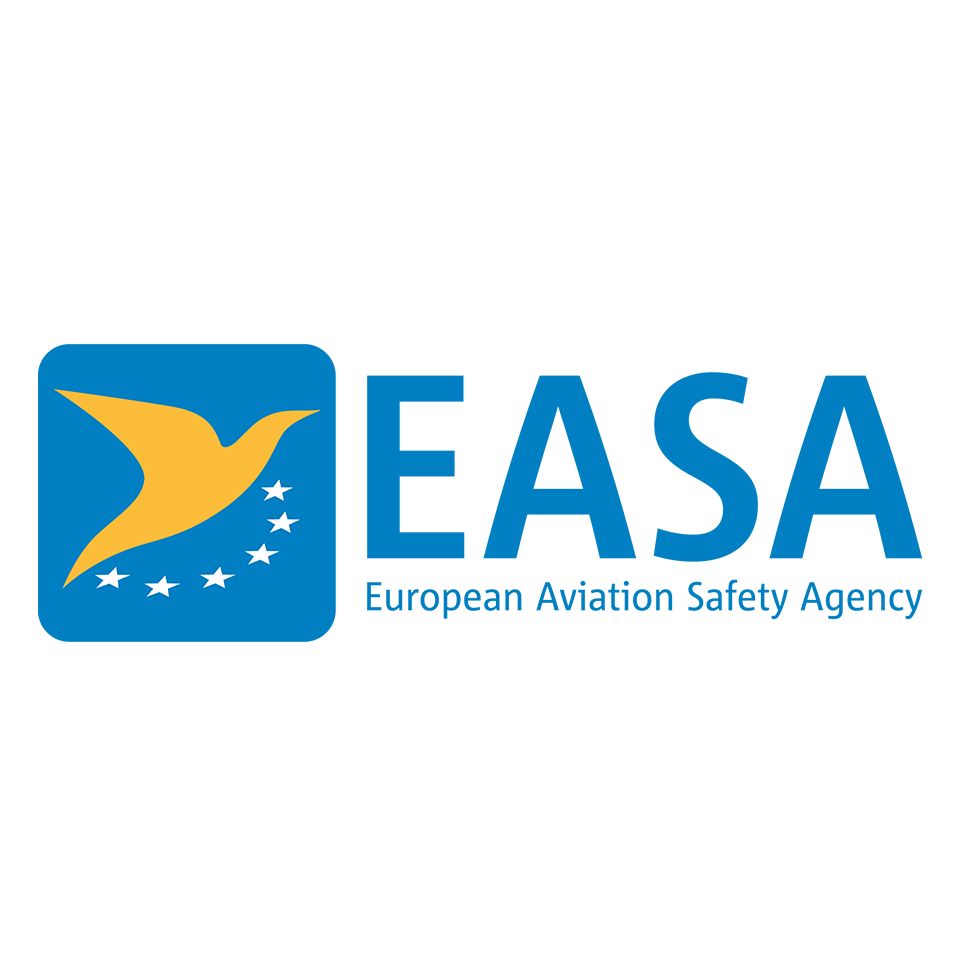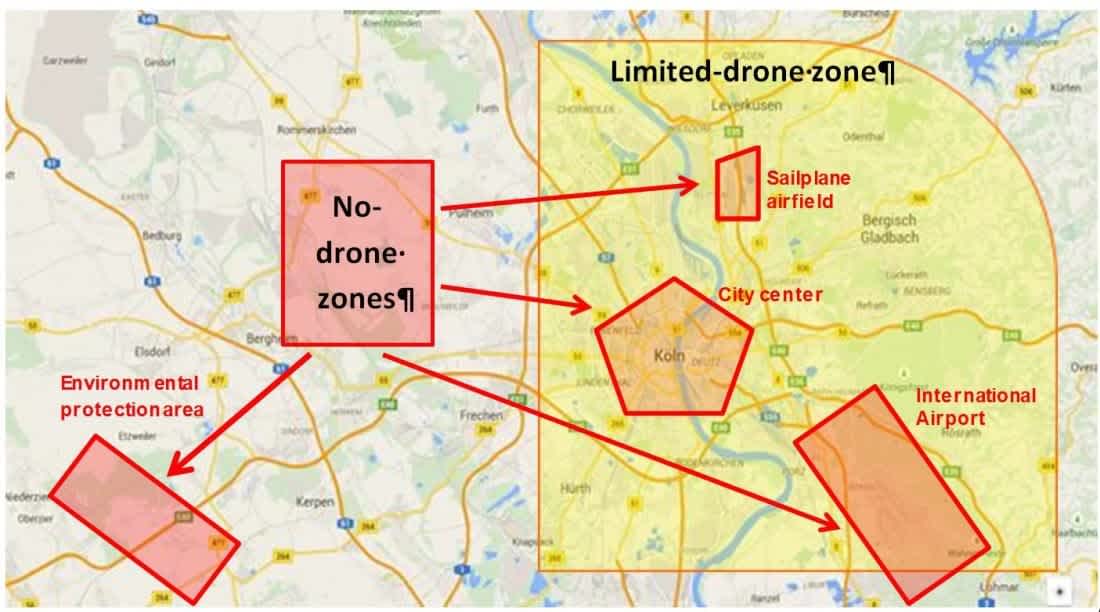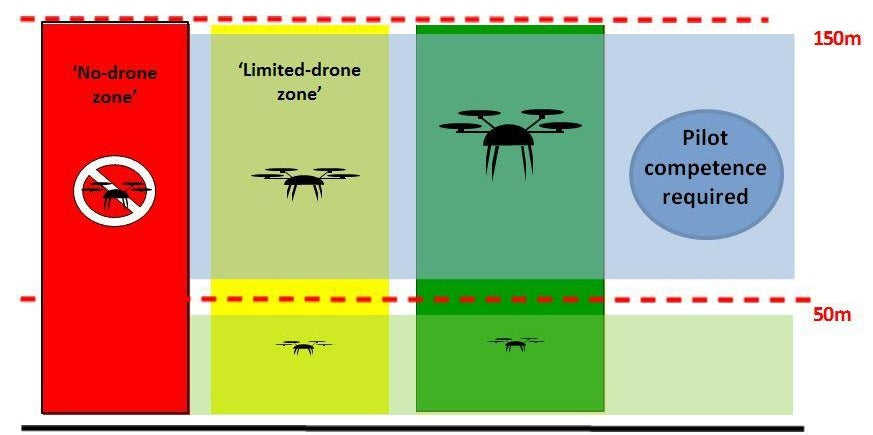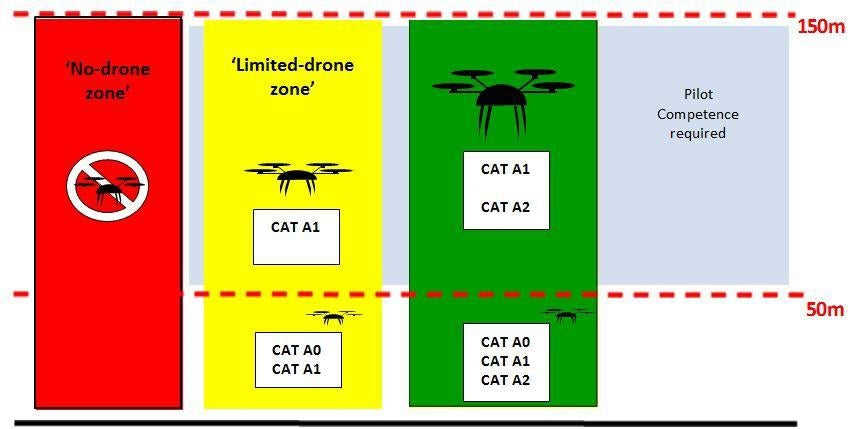
Training & Regulations
Drone Regulations for Europe
European drone regulations are hovering over the horizon. What changes could the new laws mean for hobby pilots and commercial operators? ... Read More
Just when you thought you'd got your head around the UK's drone regulations and categories from the Civil Aviation Authority, a brand new set of rules will soon be flying over the horizon from Europe. The European Aviation Safety Agency (EASA) is currently working on proposals that will standardise the way drones are flown across the EU.

EASA says: "The drone industry is diverse, innovative and international. It has an enormous potential for growth with the associated possibility to create jobs. To ensure a safe, secure and environmentally friendly development, and to respect the citizens’ legitimate concerns for privacy and data protection, EASA has been tasked by the European Commission to develop a regulatory framework for drone operations as well as concrete proposals for the regulation of low-risk drone operations."
Three new drone categories
In what they call an Advanced Notice of Proposed Amendment, EASA sets out three new main categories for drones:
‘Open’ category (low risk): safety is ensured through operational limitations, compliance with industry standards, requirements on certain functionalities, and a minimum set of operational rules. Enforcement shall be ensured by the police.
‘Specific operation’ category (medium risk): authorisation by National Aviation Authorities (CAA in the UK), possibly assisted by a Qualified Entity (QE) following a risk assessment performed by the operator. A manual of operations shall list the risk mitigation measures.
‘Certified’ category (higher risk): requirements comparable to manned aviation requirements. Oversight by NAAs (issue of licences and approval of maintenance, operations, training, Air Traffic Management (ATM)/Air Navigation Services (ANS) and aerodrome organisations) and by EASA (design and approval of foreign organisations).
EASA is also proposing a set of zones to restrict drone flights. Each country's "competetent authority" (the CAA in the UK) can define ‘no-drone zones’ where no operation is allowed without authority approval, and ‘limited-drone zones’ where drones must have a system in place to enable easy identification and automatic limitation of the airspace they can enter (geofencing) and should have a limited mass. Some manufacturers, including the world's largest DJI, already programme their copters with no fly zones.

Examples of proposed no drone zones and limited drone zones. EASA wants to use its proposals to harmonise regulations across the EU, particularly as in some countries there are no rules at all. The limitations proposed for the ‘open’ category are already seen as a good average of the existing national regulations. They say: "The absence of some of the proposed technical mitigations (e.g. common standards for information on ‘no-drone zones’ and limitation areas) for the future ‘open’ category could be compensated by simple remote pilot qualification programmes or increased distance from critical infrastructure and persons:
from 0 kg < 4 kg: keep safe distance from persons, do not fly above crowds, do not fly over 50 m above ground unless aviation competence is available;
from 4 kg < 25 kg: keep minimum 50 m distance from persons or vehicles on the ground, do not operate in congested areas, fly below 50 m above ground unless the pilot has aviation awareness;
from 25 kg < 150 kg and any operation exceeding the limitation above: establish a safety assessment process;
a minimum distance of 5 km from airfields and other sensitive infrastructure is recommended.
Open Category
Most people will be concerned with the Open Category where most of EASA's proposed limitations will be familiar - with a few exceptions. All drone operations in the Open Category will normally be conducted within these limitations:
Only flights in direct visual line of sight of the pilot are allowed.
Only drones with a maximum take-off mass below 25 kg are allowed.
No operation of drones in ‘no-drone zones’ is permitted.
Drones operating in ‘limited-drone zones’ must comply with the applicable limitations.
The pilot is responsible for the safe separation from any other airspace user(s) and shall give right of way to any other airspace user(s).
A drone in the ‘open’ category shall not operate at an altitude exceeding 150 m above the ground or water.
The pilot is responsible for the safe operation and safe distance from uninvolved persons and property on the ground and from other airspace users and shall never fly the drone above crowds (> 12 persons).

Pilot competence required for drone operations over 50 metres above the ground. The Maximum Take Off Mass is larger than the current 20kg UK category limit. Currently the regular maximum altitude is 121 metres or 400 feet. 150 metres works out at 492 feet and, of course, currently manned aircraft are allowed to fly as low as 500 feet. That seems a bit too close for comfort. You'll also notice that if you want to fly higher than 50 metres and up to the 150 metre limit you would have to satisfy the authorities that you the pilot have "basic aviation awareness".
EASA says "It is not the intention to create a licence, but merely to develop learning objectives or an e-learning tool. Alternatively, the education provided at model-flying associations could be accepted as equivalent." It's difficult to know how that would be policed. Getting hobbyists to stick to the current 400ft altitude/500 metres distance UK limits is difficult but restricting them to 50 metres altitude or checking their credentials for up to 150 metres is likely to be tricky.
Sub-categories
Just to complicate matters further, EASA is suggesting sub-categories for the Open Category " to allow for a more flexible adaptation to the risk". 0 to 999 g — CAT A0 Toys or Mini Drones
Any drone sold as a toy or consumer product with a mass below 1 kg could comply with the applicable product safety directive and shall have limited performance to assure flight below 50 m above ground and local operation or alternatively the means to automatically limit the altitude and the airspace they can enter.
Operation shall be performed below 50 m above ground.
1 to 3,99 kg — CAT A1 Very Small Drones
Any drone sold as a consumer product which is heavier than 1 kg could comply with the applicable general product safety directive and shall have the means to automatically limit the airspace it can enter and the means to allow automatic identification.
Drones operating in the ‘limited-drone zones’ shall have active identification and up-to-date geofencing capability enabled.
For any operation over 50 m above ground, the pilot needs to have basic aviation awareness.
Any failures, malfunctions, defects or other occurrences that lead to severe injuries to or fatalities of any person need to be reported.
4 to 25 kg — CAT A2 Small Drones In this subcategory there are mainly products operated commercially, e.g. carrying high-quality camera systems, or drones or models operated by enthusiasts.
Any drone sold as a consumer product which is heavier than 4 kg could comply with the applicable general product safety directive and shall have the means to automatically limit the airspace it can enter and the means to allow automatic identification.
Operation in the ‘limited-drone zones’ is not permitted in the ‘open’ category for drones with a take-off mass above 4 kg.
For any operation over 50 m above ground, the pilot needs to have basic aviation awareness.
Any failures, malfunctions, defects or other occurrences that lead to severe injuries to or fatalities of any person need to be reported to the Agency

Zones of operation for the three subcategories of "Open" drones. The vast majority of our customers here at Heliguy are going to be flying drones in the Open Category because even the A2 sub-category would include some pretty hefty rigs. But then again if the risk involved in your flight is greater you could find yourself in the next category, even with something like a DJI Phantom 3.
Specific Category
The Specific Operation Category is medium risk because it exceeds the parameters of the Open category. Therefore EASA proposes: "‘Specific risk operation’ is any operation with drones which poses more significant aviation risks to persons overflown or which involves sharing the airspace with manned aviation. Each specific aviation risk needs to be analysed and mitigated through a safety risk assessment."
So, for example, if you're going to fly beyond line of sight or even fly a small drone over a densely populated area or into airspace shared with manned aviation, you would switch from Open to Specific Category. That means you would need authorisation by your National Aviation Authority (CAA in the UK), possibly assisted by a Qualified Entity (QE) following a risk assessment performed by you. An operations manual would have to list additional safety measures that you would take.
This will be familiar to anyone who has gained a PFAW (Permission for Aerial Work) from the CAA in the UK. The Ops Manual sets out how you intend to run your commercial drone business and what your safety and emergency procedures are.
Certified Category
The third category - Certified - covers areas of operation with even higher risk and will require stricter regulation or, as EASA puts it, "When unmanned aviation risks rise to a level similar to normal, manned aviation, the operation would be placed in the ‘certified’ category of operations. "Examples are international cargo transport operations with large drones, transport of persons or any other operation where the risk assessment process of the ‘specific’ category does not sufficiently address the high risks involved in the operation.
The delimitation between ‘specific’ and ‘certified’ category may not be easily expressed in terms of weight as it is related to the applicability of the safety risk assessment process." This could all lead to a requirement for a Certificate of Airworthiness for the drone and drones would be treated in what EASA calls "the classic aviation manner". That means multiple certificates would have to be issued for several aspects of the aircraft plus some more certificates which would be specific to drones."
It's a massive and complicated subject and the proposed drone regulations could well change. We'll have to wait until November 2015 before the European Commission publishes its plans as part of the ‘aviation package’ legislative proposal.
